
With a bushy profile and a dash of colour, the Bibio is an excellent loch style fly, that works on wild lake trout wherever you find them. We also like it because it produces well in the sort of blustery, unsettled conditions that have characterised large chunks of the British summer this year! Here's how to tie our fly of the month for July 2015, along with some fly fishing tips:
The Bibio is a best described as a bold, no nonsense fly for targeting the trout of windswept waters. It can hardly be called a realistic fly, but is nonetheless highly effective. The busy hackle can suggest any number of waterborne or drowning flies, while a dash of red makes it easily locate for trout even when conditions are rough or visibility poor.
It is a fly few loch fly fishers would be without in the larger sizes such as a 10 or 12. That said, finer versions also work well for smaller trout or less blustery lakes. This is no finesse fly however, and works best when pulled or tweaked through the water on breezy days, when insects are blown in and the trout are aggressive.

There are different ways of tying the Bibio, not to mention one or two little tweaks that can improve the fly further. One is to use hen hackle, for example rather than cock. Black hen is less stiff, but gives better movement, especially with smaller flies.
The other parts of the fly can also be adapted. A little sparkle mixed in with the dubbing can add attraction. The rib itself can also vary. Our tying sequence shows a rib made of oval silver tinsel, but silver wire is much easier and clogs up the hackle less if you tie Bibios down to sizes 14 and smaller.
Hook: Turrall Standard Nymph size 10-14
Thread: Black
Rib: Oval silver tinsel, or wire
Body: Black and red dubbing (seals fur or sub)
Hackle: Black cock or hen
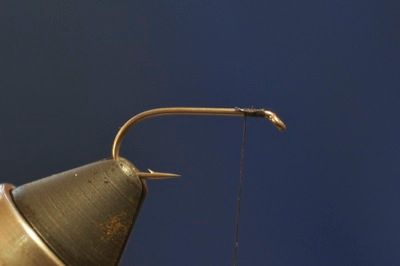 Step
Step 1: Run some thread onto the hook until it catches.
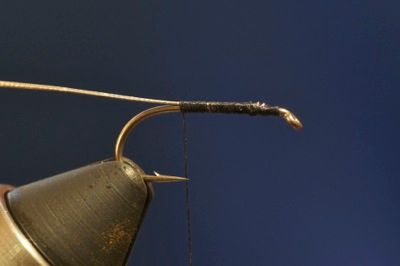
Step 2: As you wind the thread down the hook shank, catch in a length of silver oval tinsel or wire.
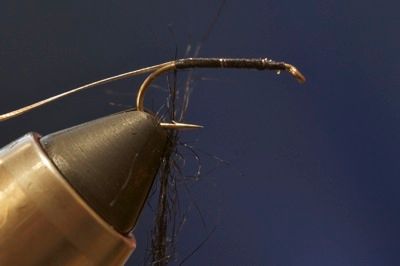
Step 3: Once the thread is roughly above the hook point, rub some some black dubbing on between your finger tips.
 Step 4: Apply the dubbing in even turns until you reach just before half way. Now apply a little red to the tying thread. It's easier to apply too much than too little, but you can always tease excess off the thread.
Step 4: Apply the dubbing in even turns until you reach just before half way. Now apply a little red to the tying thread. It's easier to apply too much than too little, but you can always tease excess off the thread.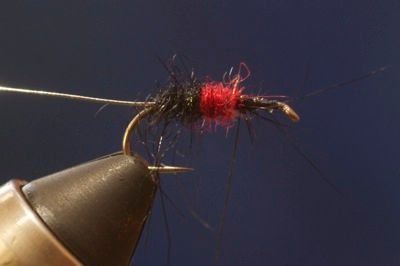
Step 5: Make 2-4 turns to form a red centre point.
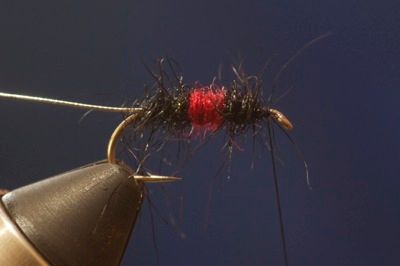
Step 6: Now apply just a little more black dubbing, leaving ample space to form a head later.
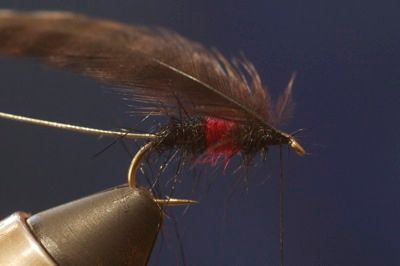
Step 7: Tie in your hackle, as shown. You can use either black cock, or hen for a softer hackle.
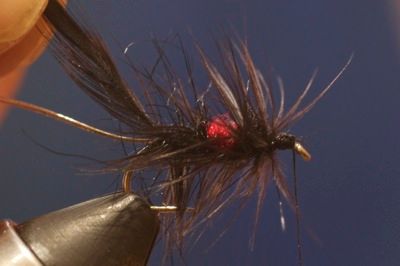
Step 8: Wind the hackle back in even, open turns, taking care to keep the red middle exposed.
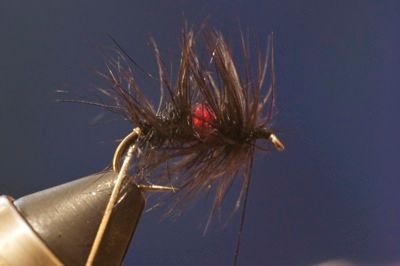
Step 9: Now comes the tricky part: pull the feather tight at the end of the body and trap in place with two tight turns of your rib. Keeping the tension, trim the end of the hackle feather.
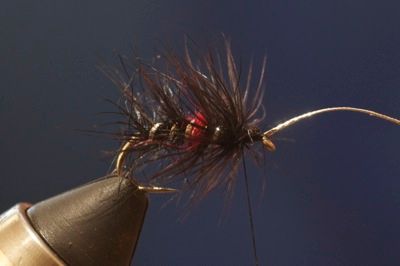
Step 10: Now pass the silver rib back towards the eye of the hook in secure, even turns. You can always undo a turn or two and try again if you don’t get it right the first time. Trap the rib with tying thread, close to the eye of the hook.
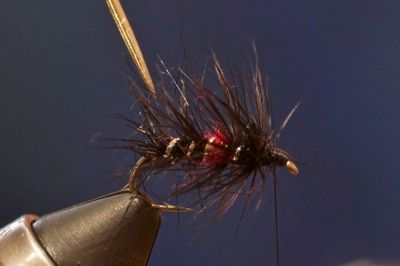
Step 11: You can now use a dubbing needle to tease out any trapped feather fibres and make the body a little buggier.

Step 12: Whip finish and add just a spot of varnish to the head to finish.
A few Bibios in sizes 10-14 are worthy of a place in any fly box. A fly to rely on when the wind is up and the chips are down, they work singly but are even better as part of a team of three- and if there is a good chop on the water, don't be afraid to give them a lively retrieve to grab the attention of the fish.
Should you want a few flies to start you off, our range includes not only the Bibio and other loch style classics, but some great value fly collections with the Turrall FlyPod.
Happy fishing for now and don't' forget to follow Turrall Flies on Facebook, Twitter and Pinterest for regular news, flies, tips and giveaways.

No comments:
Post a Comment